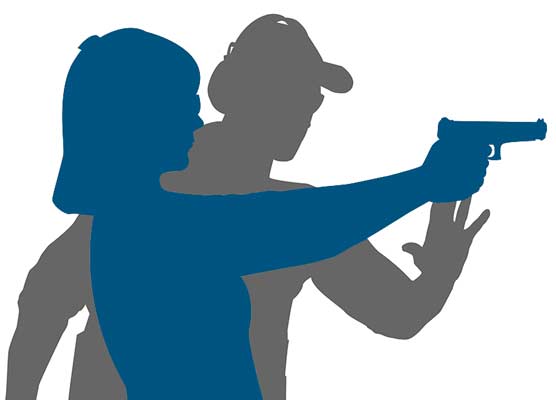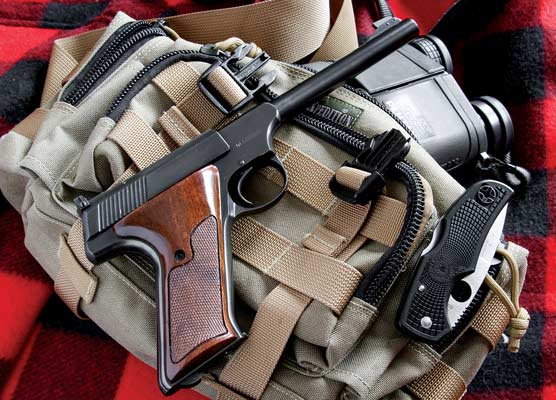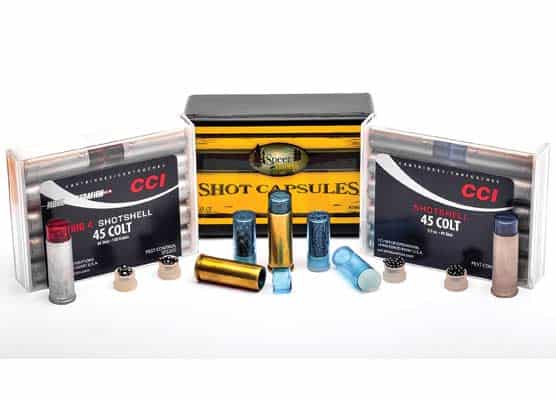Personal Aftermath
It is common for defensive gun usages to happen at or near one’s home. Often, family members are present, and it’s a traumatic thing for them to experience. You’ll recall Adam’s wife, Shannon, was outside the house and in fact the first to call 911. She told American Handgunner, “When Adam stepped out with the firearm, I told 911, ‘My husband has a firearm, he has a permit, he’s trying to get the guy to sit down.’ I heard the dispatcher say ‘Weapon involved’ or ‘Weapon on scene.’ My husband walked over to the curb and had the husband sit down. I saw the woman and girl run into the house. A car blocked my view of Brandon, I couldn’t see if he was sitting or lying. In 30 seconds, I saw the man jump up and come rapidly toward my husband and when they got about 10 feet apart, my husband started backing up. He was telling my husband, ‘You aren’t going to do anything with that, you fat ass.’ He began to lunge at Adam, and Adam fired. I thought it was three shots. He collapsed. I saw blood squirting everywhere.”
Altered perceptions are extremely common in these incidents. Far more often than not, auditory exclusion or auditory muting will occur. Adam Nesvick was no exception. He told AH, “I had auditory exclusion so bad I didn’t hear everything he said as he came at me while I was screaming ‘Don’t do it!’ When I fired, I remember hearing muffled gunshots. I heard little pops, but I was deaf as a post for three days later.”
Another extremely common phenomenon is tunnel vison. Adam told us, “When the woman and the little girl went into the house and he got up, I realized ‘Oh, my God, this is going to happen, I’m probably going to have to shoot,’ and I hyper-focused on him from then on.”
When multiple shots are fired, relatively few participants remember the round count correctly. This was true here as well. Adam and Shannon each thought Adam had fired three shots, while one eyewitness insisted five shots were fired. All were incorrect: Evidence incontrovertibly proved Adam had unleashed four rounds.
After you’ve been in an incident like this, people treat you differently. Dr. Walter Gorski, the great police psychologist who is credited with defining “post shooting trauma” as something separate and distinct from Post Traumatic Stress Disorder (PTSD) referred to it as Mark of Cain syndrome. Sometimes, you are excoriated as a murderer. On the opposite end of the spectrum, you may be treated like a hero. The latter of course is better, but can still leave you wondering whether people still see you as the good neighbor, the good professional, the good worker at your job; instead, they see you as “He Who Killed,” and it changes the way they treat you, which in turn can change the way you feel about yourself.
Little kids had always seemed to play outdoors in their neighborhood; after the shooting, not so much. The mom and daughter whom Adam had rescued spent a couple of days in the hospital, refused to look at Adam or Shannon after coming home, and soon moved away. Other neighbors started moving away too.
That said, though, Adam reports, “No one really dumped on us. One of the little kids, who was a friend of the little girl who used the bat to try to get Brandon to stop beating her mom, saw us on the street and gave us a big thumbs up. Brandon’s best friend told me, ‘I’m sorry he died, but you did what you had to do.’ The apartment complex gave us a $50 gift certificate to go to dinner on them.”
Sleep disturbance is a virtually universal experience among those who’ve had to kill to survive. “I didn’t sleep for three days afterward,” Adam told us. “This eventually went away. I had flashbacks for a long time and still do occasionally, but not as bad or as vivid. Shannon had really bad flashbacks. We were comfortable talking about it, and that got us through a lot. Shannon got counseling. I got help from friends who had been through similar things, maybe more help than I would have gotten from a psychologist.”
In 2020, the Nesvicks moved to another state. “I thought getting away was the best thing, not being in the place every day where I had shot someone,” Adam explained.
The police gave him his gun back a month later. He was deeply touched to note the cops had not only wiped the blood spatter off the SIG but had cleaned and oiled it too.
His SIG went away. It carried too many unpleasant memories. Today Adam carries a CZ P10C.




